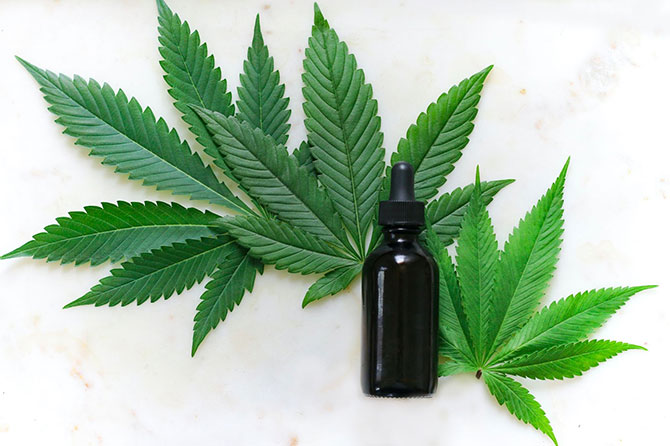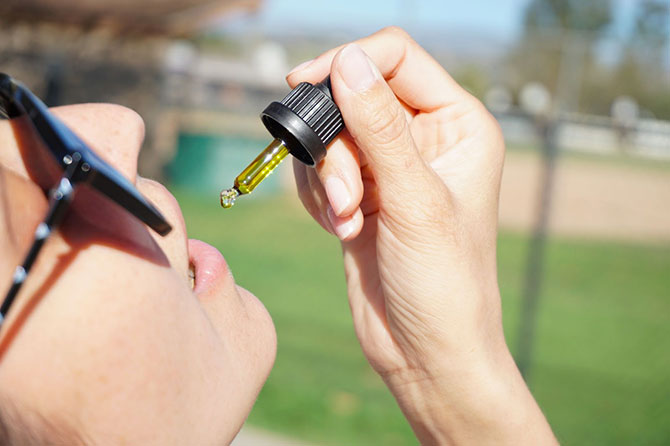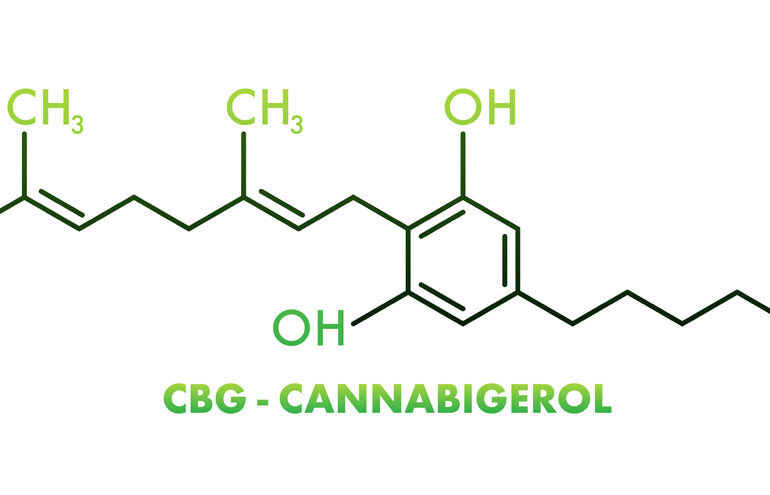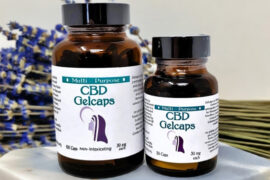We all know and love CBD, but not many people have heard of CBDa. CBDa, short for cannabidiolic acid, is one of more than 100 phytocannabinoids present in the cannabis plant. In recent years it has been receiving increasing attention in the medical world for its therapeutic potential.
So, what is CBDa, how is it different from CBD, and why should you try CBDa products? This detailed guide tells you everything you need to know about CBDa.

What is CBDa?
CBDa is one of the most abundant cannabinoids found in glandular trichomes on the female seedless flowers. CBDa, or cannabidiolic acid, serves as a chemical precursor to CBD.
As the cannabis plant matures and CBDa is exposed to sunshine and heat, the acidic molecule separates, leaving CBD behind. This process is known as decarboxylation. In other words, as CBDa ages, it naturally transforms into CBD.
Even though this reaction happens naturally, it is very slow. Of course, the process can accelerate significantly when cannabis is smoked, baked, or vaped.
The Differenсe Between СBDa and СBD
In essence, CBD and CBDa are two different forms of the same cannabinoid; only an additional carbon atom and two oxygen atoms separate CBDa from CBD. Therefore, both cannabinoids are present in cannabis, both are therapeutic due to their effects on the human endocannabinoid system, and neither has intoxicating properties.
One of the key differences between CBD and CBDa is the potency. Studies conducted on animal models have shown that CBDa is more potent and beneficial for treating various ailments, including reducing anxiety and stress, providing pain relief, and preventing nausea. Human research, however, has not yet verified these results.
Another difference between CBDa and CBD is their bioavailability. The term “bioavailability” in medicine describes how much of a substance is really absorbed by the body after it is administered. According to certain studies, CBDa is five to eleven times more bioavailable than CBD.
How Does СBDa Work?
Despite being closely related, CBDa and CBD work in different ways.
While most cannabinoids attach directly to the CB1 or CB2 receptors, CBDa interacts with the endocannabinoid system by inhibiting the cyclooxygenase-2 enzyme. Since cyclooxygenase-2 enzymes are linked to inflammation following an illness or injury, CBDa can reduce inflammation and related discomfort by suppressing these enzymes.
Researchers have also shown that CBDa can impact the body’s serotonin receptors (5-HT receptors) in a rodent study, suggesting a possible use of CBDa as a treatment for illnesses including nausea and vomiting induced by chemotherapy, as well as other ailments that cause these symptoms. Still, more study is required to confirm these effects on human models.
In addition, CBDa appears to activate the SHARP1 gene, also known as BHLHE41, which prevents the spread of breast cancer.
How Effeсtive is СBDa?
CBDa is said to have up to 1,000 times the potency of CBD for some effects, but there isn’t enough scientific evidence to back up this claim.
The acidic cannabinoid has, nonetheless, demonstrated considerable potential for human health. Once researchers advance from experiments on animal models to clinical trials, we will learn more about CBDa’s effectiveness.
The Benefits of СBDa
While the health advantages of CBD and THC are well known, CBDa has received little attention as a potential healing agent. As mentioned before, a significant portion of the preliminary data is based on studies of animals, raising the question of whether or not CBDa’s effects will be similar in people. However, CBDa has demonstrated medicinal promise in a few important areas:
Vomiting and nausea. The treatment of vomiting and nausea is one area where CBDa is well-researched. One study has found that CBDa effectively relieved vomiting caused by toxins and motion in shrews, as well as nausea in rats. Most importantly, the same study suggests that CBDa might be even more beneficial than CBD in reducing nausea and vomiting.
Anxiety. Animal studies have shown that CBDa reduces anxiety and anxiety-like behaviors. This may be a result of its interaction with serotonin receptors. It also helps increase the levels of anandamide, a neurotransmitter known as the “bliss molecule,” due to its impact on happiness and mental health.
Inflammatory conditions. Similar to the more well-known cannabinoid CBD, CBDa has anti-inflammatory properties since it seems to inhibit COX-2. Although there haven’t been any studies on CBDa for arthritis or joint pain, it is assumed that it should provide some relief for these conditions.
Cancer. Breast cancer is one of the illnesses for which CBDa is bringing hope. One study discovered that CBDa could prevent breast cancer cells from metastasizing, i.e. spreading throughout the body. Since experts believe up to 90% of breast cancer-related fatalities are caused by metastasis, this CBDa discovery may improve the prognosis for people with this fatal illness.
Is CBDa Legal?
CBDa is legal in almost all states because it does not cause intoxication. Hemp and any product derived from it which contains less than 0.3% THC have been decriminalized as a Schedule 1 restricted substance under the 2018 Farm Bill.
Keep in mind if the CBD oil or product you are carrying has more than .3% THC, then that medicine is illegal in states where THC is prohibited. There are oils on the market that are labeled CBD that do have higher amounts of THC than what qualifies as hemp.
Make sure you have your card with you if you’re a medical cannabis patient bringing CBD oil with THC on a trip. Otherwise, be mindful of local cannabis restrictions when traveling with CBD and CBDa products.

How To Know the Right Dosing
Both CBDa and CBD can be found in oils, edibles, topicals, gelcaps, and other products. CBDa cannot be smoked in raw form since it would cause the cannabinoid acid to transform into CBD. For this reason, many users juice fresh cannabis leaves to obtain cannabidiolic acid in its purest form.
CBD and CBDA offer similar health benefits, and which one you will use depends on your preferences. However, it is even better to use them together as they mix extremely well with other cannabinoids and can enhance the result through an entourage effect.
When it comes to dosing, the usual dosage range for CBDA or CBD products is 10 mg to 100 mg per day, but this varies from person to person.
Several variables, such as the state of your endocannabinoid system, the condition you need to treat, your body weight, the concentration of CBDa or CBD in the product, etc., will affect the CBDa dosage that would be effective for you.
Regardless of your product, starting with a single dose is always the best option. If you have never taken it before, we suggest you take 5 mg and wait to make sure there is no negative reaction – as we would suggest with any new medicine. Pay attention to how your body reacts and adjust the dosage accordingly.
What Is CBDa: The Bottom Line
CBDa is not as well-known as CBD, but it might have several positive effects on human health. The potential of CBDA, particularly for illnesses like breast cancer, nausea, and vomiting, is still only beginning to be understood. It’s also possible that this underappreciated cannabinoid has a wealth of additional benefits that are simply waiting for us to find them.







Comments are closed.